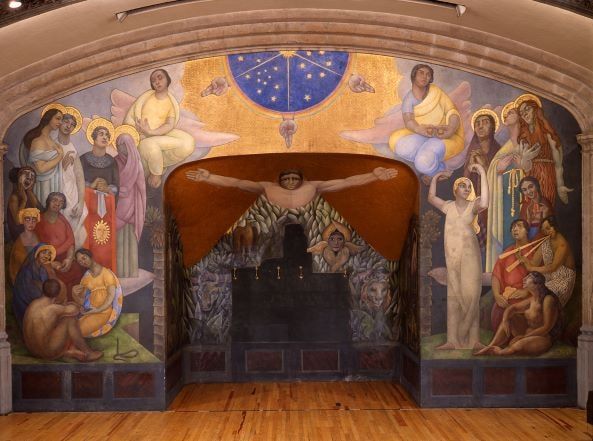The Creation: A Conceptual Mural of Diego Rivera's Art
The Creation is Diego Rivera's first mural. It explores the concept of mestizaje, which today has been put up for debate. The painter brought to Mexico this powerful impulse of artistic renovation that would influence a generation of painters.





